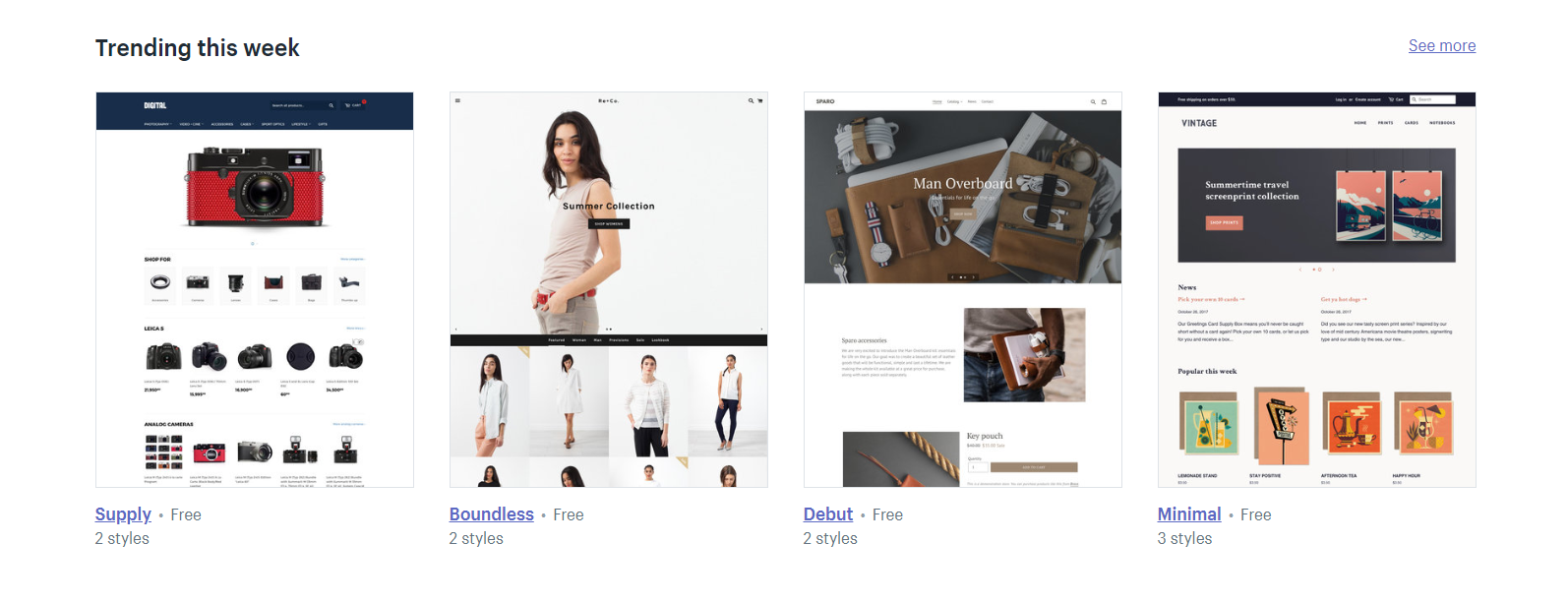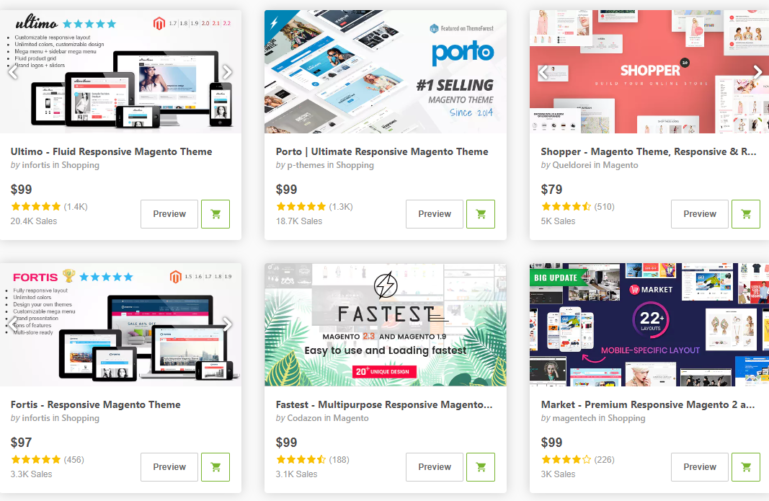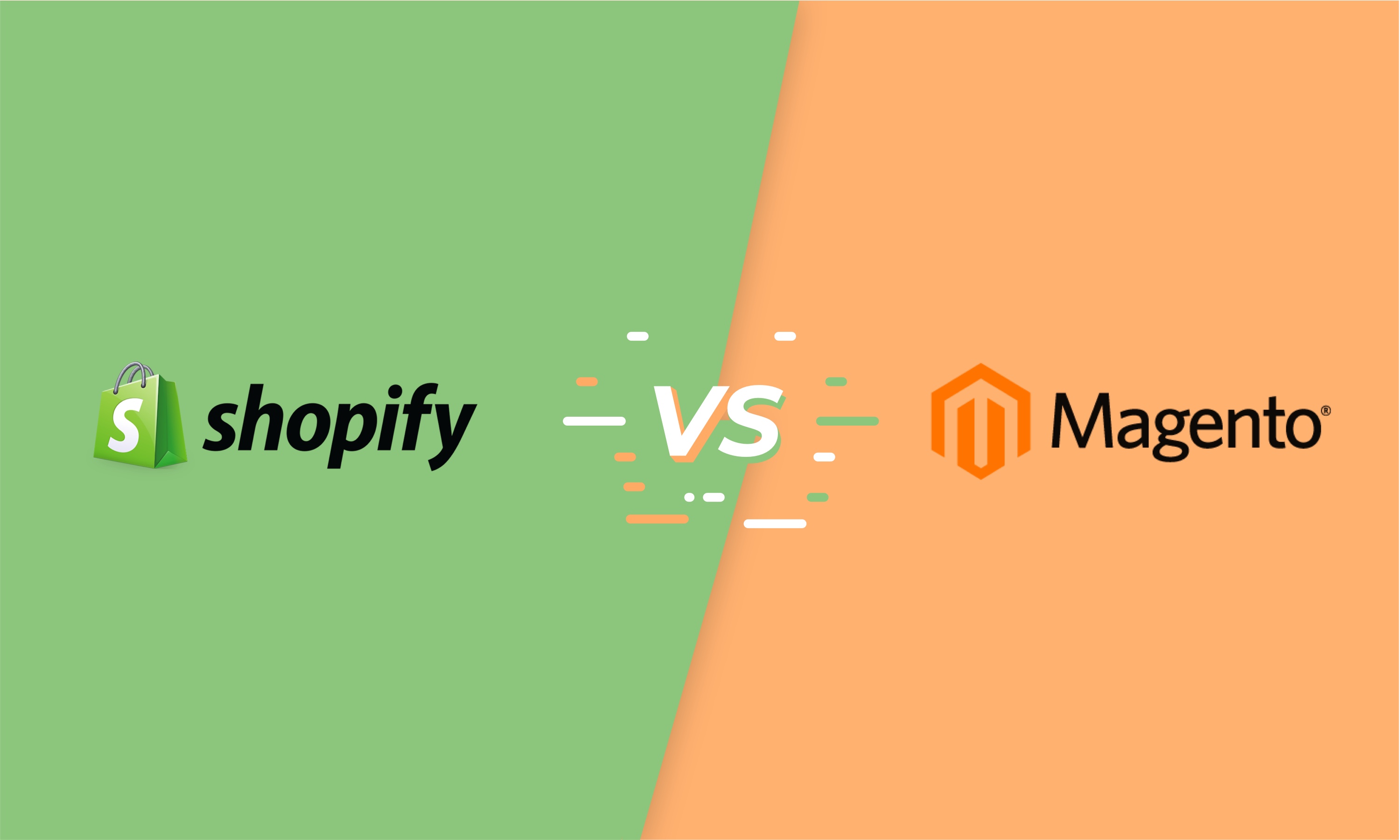A great number of ecommerce platforms knocks off-balance, right? Taking into account that the software choice has a direct impact on your business prosperity, you should take the matter very seriously. To make the selection process a bit easier for you, we picked the most crucial criteria and used them to compare the capabilities of Magento and Shopify.
So, there will be nine rounds in our Magento vs Shopify match:
- target audience
- usability
- customer support
- promotional deals
- payments
- templates and design
- add-ons
- SEO
- pricing policy
Let’s see what will be the winning ecommerce platform in this battle.
Contents
Round 1: Target audience
At first sight, it may seem that these two ecommerce offerings are very much alike; but it’s far from the case. They suit particular types of clients, and hence the difference in functionality and pricing appears.
Shopify is a fully-fledged ecommerce platform, which provides some ready-made solutions for a quick start, including even hosting services and the domain name availability checker and generator. To some extent, that is why many small and medium businesses love Shopify. Today, the platform is used by more than 800,000 e-stores, including even such established companies as General Electric, Amnesty International, Tesla Motors, Foo Fighters, and GitHub.
Magento is an open-source software. Its users need to acquire hosting themselves and then adjust the settings before their online shop starts working. Launching a Magento store from scratch requires considerable coding skills and hence suits large ventures who can afford software development. In total, the number of Magento stores equals 250,000, with Coca Cola, Ford, Fox Connect, Warby Parker, and Olympus on the list.
To sum up, Shopify is the best choice for SMEs, while Magento is mostly suitable for big enterprises.
Round 2: Usability
Usability is the ease of interaction with a particular software product. In the case of Magento and Shopify, it is the simplicity of setting up and configuring the online shop.
Shopify offers a reputedly intuitive and clean interface. It provides simple configuration tools and allows editing themes via drag-and-drop actions. Even if it is your first experience with creating an online shop, you will not be confused by the complexity of tech settings.
Magento is not such a simple system as Shopify. To name a few challenges for non-tech users, it lacks in unit testing, has no package manager, and the configuration takes tweaking XML files. So, if you are not a developer, it can be a problem even to get a store with basic functions. You will have to study official technical guides or hire ecommerce developers to configure everything right.
As Shopify is easier to run than Magento, it is a more appropriate option for SMEs who want to enter the ecommerce market quickly. Still, to get strong functionality and branded UI, merchants will have to turn to software development experts, whatever of the two platforms they choose.
Round 3: Customer support
Quality customer support is one of the prime criteria for choosing a product. That is a safeguard against unexpected errors and crashes.
Shopify provides detailed FAQ, video tutorials, webinars, and 24/7 support for all its clients with the ability to reach the support team via e-mail, live chat, phone, or Twitter. Besides, there is a Shopify Community, which counts around 600,000 users. There you can ask other merchants and developers the questions that concern you most or share your ideas.
As for Magento, there is a help-center with guides, FAQ, and how-tos. Vendor support is provided only for the Commerce edition (former Enterprise), which is a paid version designed for huge companies. Like Shopify, Magento also has a community that can replace support to a certain extent.
A full 24/7 support for all customers versus exclusive assistance for huge enterprises only—Magento loses this round.
Round 4: Promotional deals
Discounts and holiday promotions are popular ecommerce marketing techniques as they attract the attention of a broad audience, increase traffic to the store, and make your shoppers more loyal to the brand.
Shopify has powerful promotion capabilities allowing you to sell gift cards for any amount. The cards are created with unique codes and are instantly delivered to the relevant customer by e-mail. You can also generate discount coupons tied to a certain amount of purchased items and offer free delivery.
Magento doesn’t lack behind and also supports discount codes, coupons, and free shipping for customers.
As the promotional functionality of both platforms is pretty equal, the round ends in a draw.
Round 5: Payment processing
When you ask yourself what to choose: Magento or Shopify, consider such an essential aspect as online payment processing. The success of a business depends on how convenient and secure payment is for customers.
With Shopify, you can accept credit cards directly (Visa, Mastercard, American Express, and Discover), with no third parties involved. In addition, the platform provides integrations with over a hundred of payment processing gateways. So, you can accept online payments via PayPal, Apple Pay, and Amazon Pay, or even try Cryptocurrency payments. To make shopping faster, you can keep the buyers’ info with a default checkout accelerator, Shopify Pay. All this makes order placing and payments easy, what is vital for your consumers.
As for Magento, direct processing of Visa, Mastercard, and American Express is also possible. The platform supports both bank transfer and online payment options, including PayPal, Clarna, and Authorize.Net, as well as offers In-context Checkout. Still, there are fewer default integrations with payment gateways in Magento than in Shopify.
To sum up, both Shopify and Magento support a diversity of payment options to make shoppers’ buying experience fast and pleasant.
Round 6: Templates and design
The two ecommerce platforms have a huge collection of themes and templates allowing you to make the store attractive and eye-catching.
For a more comfortable choice, Shopify’s every template has
- a caption,
- up to three design styles with live previews,
- examples of websites created on their basis, and
- users’ feedback.
Everything is set with diligence, so enabling a templated store design is a doable task even for a non-tech user. Check below for some examples of Shopify themes.

Magento also provides a great number of customizable templates, some of which you can see in the picture below.

It is worth mentioning that the templates of both ecommerce platforms are designed for seamless navigation and let merchants start quickly without extra investments on a custom design. Though there are fewer Shopify free themes, they look more magnetic than the Magento templates. All this means that launching a store on Magento will take more investments in design.
Round 7: Add-ons and apps
Today, shoppers can opt for another merchant if they don’t find their preferred services or shipping options. To provide your customers with all the features they expect, it is a must-have to implement various extensions and add-ons.
To date, there are over 3,000 apps available in the Shopify App Store. About a third of them are free. The app store is continually enriched with new apps for diverse ecommerce needs, such as inventory management, customer retention, bookkeeping, and e-mail marketing. Though all the apps go through verification before entering the Shopify App Store, you still need to be picky about choosing a particular add-on for your store. Check compatibility, read reviews, and explore trial versions before you purchase.
Magento Marketplace counts around 5,000 extensions due to the open-source code of the software. Yet, choosing a Magento extension, you have to be very careful with what you purchase as the add-on should be compatible with the particular platform version of Magento 2 or 1 and the edition that you use (Open Source or Commerce).
With more add-ons to pick from, Magento wins Round 7.
Round 8: SEO toolkit
The success of online trading greatly depends on the visibility of the store in search results.
The search engine optimization toolkit in Shopify is impressive. Meta tags, headings, links—everything is done at a high level and is very convenient to use. The amount of information that the system collects and analyzes depends on the tariff plan. Thanks to the included reports, you can find out the sources of traffic and how people find your offerings, as well as see which products are sold and which product cards customers don’t even open. Built-in capabilities are enhanced with default integration with Google Analytics. With the help of such a powerful bundle, you can build an effective marketing policy and constantly improve sales techniques.
Magento also allows you to make the online shop SEO-friendly through setting correct title tags, meta descriptions, and internal links distinctive for each page, category, and product. Like Shopify, Magento integrates well with Google Analytics. Besides, all the platform’s themes comprise media links and buttons which are quite useful for encouraging customers to share your content in social media and this way reaching out to a wider audience.
If we count the SEO points, both ecommerce platforms provide equally good functionality for optimizing stores for search engines and increasing conversion.
Round 9: Pricing policy
In the end, we all want to maximize returns on every spent dollar, so the price of the ecommerce platform affects the choice.
Shopify offers three pricing plans—Basic Shopify, Shopify, and Advanced Shopify—which suit different scales of businesses. If you are a newbie in ecommerce, choose Basic Shopify to access all the essentials at a reasonable cost. As the Shopify plan goes beyond the basics, offers more capabilities for promotion and reporting, it suits medium-sized online shops. Finally, if you are planning to run a large-scale business and hire more than five shop admins, it is better to opt for a full-fledged Shopify edition, Advanced Shopify. Check a full price list with the comparison chart here.
Let’s calculate.
A year of Shopify using will cost small and medium businesses $348 and $948 respectively (Basic Shopify and Shopify). For bigger companies, the annual cost will amount to $3,588 (Advanced Shopify).
Take into account that Shopify gives users a 14-day free trial period so that you can taste the features and check if the platform is what you need. After it, you can start with a basic plan and then upgrade as long as your business grows.
The Magento pricing depends on editions. There is a free Open Source edition and a paid Commerce edition. The paid version gives customers access to more inbuilt features and personalized services. Though the access to Magento Open Source is issued gratis, it takes considerable investments in hosting, customization, and adding extensions to launch an online shop. The price for the Commerce edition is fairly high and ranges from $22,000 to $125,000 per year. The cost of Magento Commerce Cloud varies from $40,000 to $190,000.
So, judging by the flexibility of pricing plans, Shopify outperforms Magento at least for the merchants that are starting or are not sure how fast the business will grow in the future.
Who wins the Shopify vs Magento battle?
Both Shopify and Magento are on the list of dominant software in the sphere of ecommerce business. They include rich functionality and offer various tools to make your online shop attractive and income-generating.
The core difference is that Magento is more suitable for big enterprises due to its complex nature and pricing policy. Users need to acquire hosting and configure all the settings by themselves. This is a challenging task for those who do not have a developer background.
Shopify is easier to get started, especially for beginners in online trading. More user-friendly interface and intuitive settings make it suitable for newly launched and growing companies. Though the functionality of both platforms is quite similar, many merchants today opt for Magento to Shopify migration because of an easier maintenance and management of stores based on Shopify.
We hope this Magento vs. Shopify comparison guide helped you choose your ecommerce platform. Also, explore our Top 5 Best Ecommerce Platforms In 2019 to make a more informed decision.
Feel free to share your ideas in comments and stay tuned for new posts!





